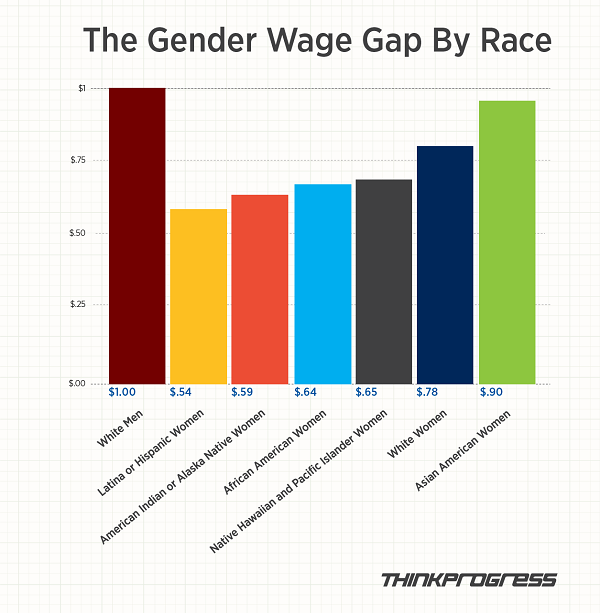On Tuesday, the Census Bureau released new figures showing that the average woman who works full time, year round makes just 78 percent of of what a man makes. It’s a slight increase from 77 percent the year before but not statistically significant, and the gap has stayed about the same for a decade.
But the wage gap varies significantly by race, according to an analysis from the research organization AAUW. While white women experienced that 78 percent figure, Native Hawaiian and Pacific Islander women made 65 percent of what white men made in 2013, African-American women made 64 percent, American Indian and Alaska Native women made 59 percent, and Hispanic women made just 54 percent. Asian-American women are the only group doing better than white women, making 90 percent of white men’s earnings.

While the overall gap closed ever so slightly last year, that wasn’t true for all women. It widened for American Indian and Native Alaskan women, going from 60 percent to 59 percent, and for Native Hawaiian and Pacific Islander women, similarly widening by a cent. While African-American women’s gap didn’t change between 2012 and 2013, it’s grown since 2011, when they made 69 percent of white men’s earnings.
Women of color get hit by the factors that suppress both women’s and all people of color’s wages. The average woman will earn less than a man at every educational level and in virtually every job. And while some of the gap can be explained by factors like women leaving the workforce to care for children, a portion remains unexplained — likely at least in part due to discrimination.
Meanwhile, black and Hispanic households in general make less than white ones: white households made $58,270 in 2013 at the median, while Hispanic ones made $40,963 and black ones made $34,598. Black workers, for example, have experienced a decade of consistently high unemployment and black job applicants are half as likely to get callbacks or job offers than white ones. And getting more education won’t catch them up.
